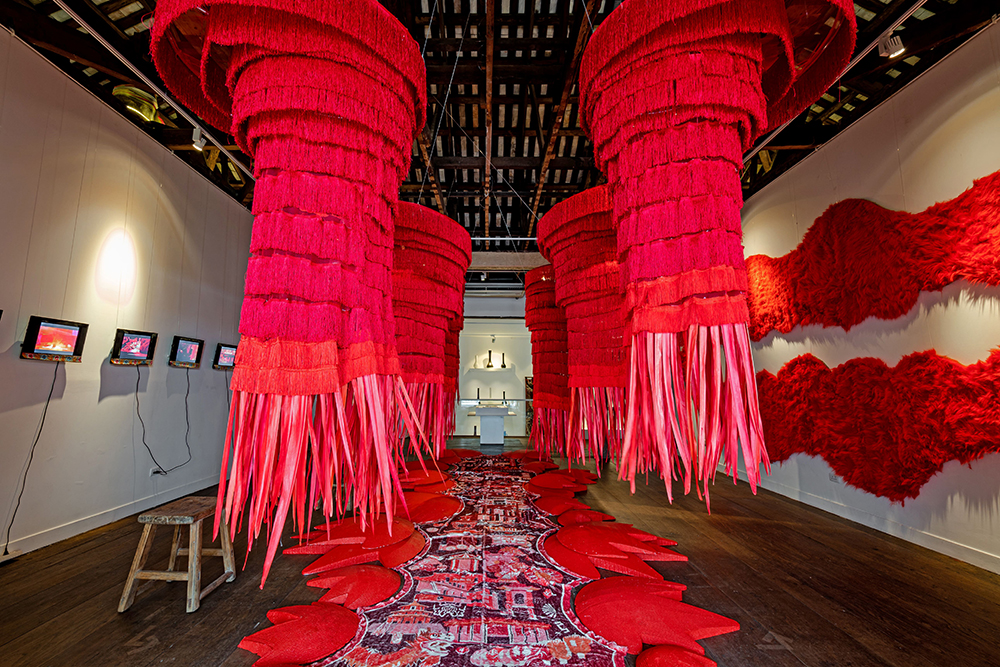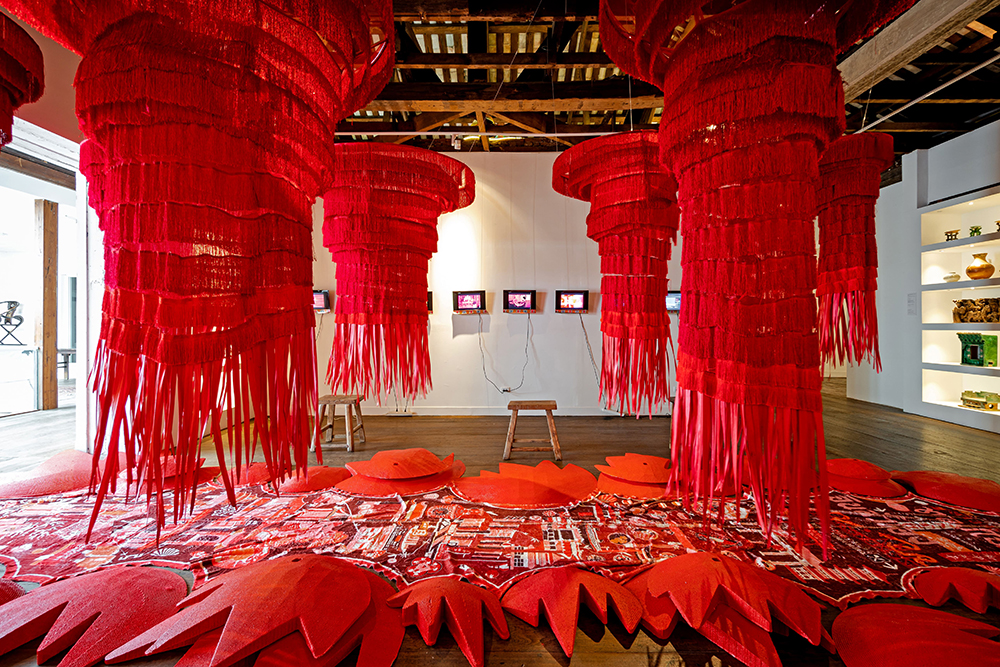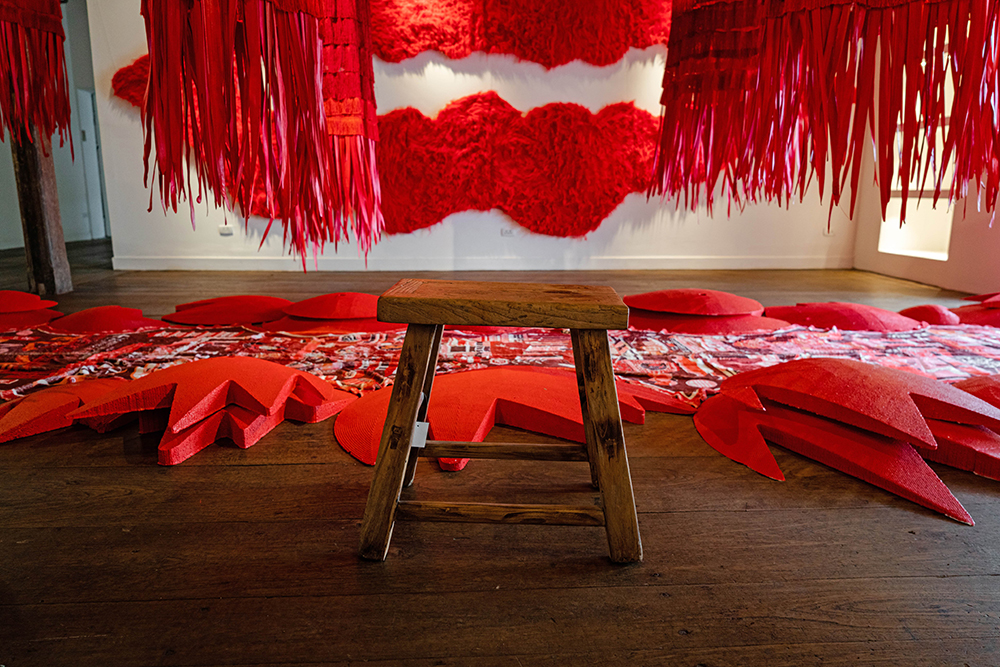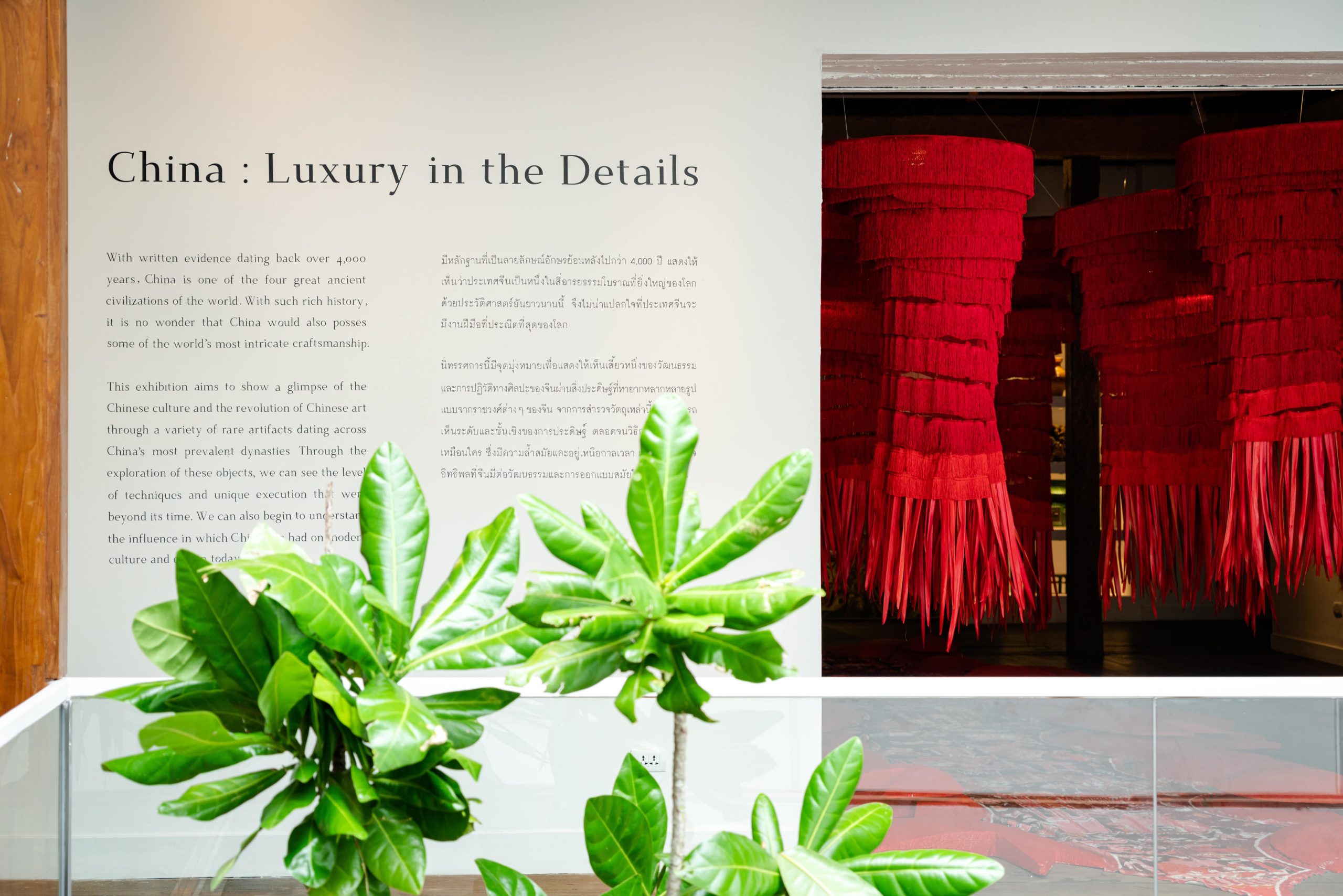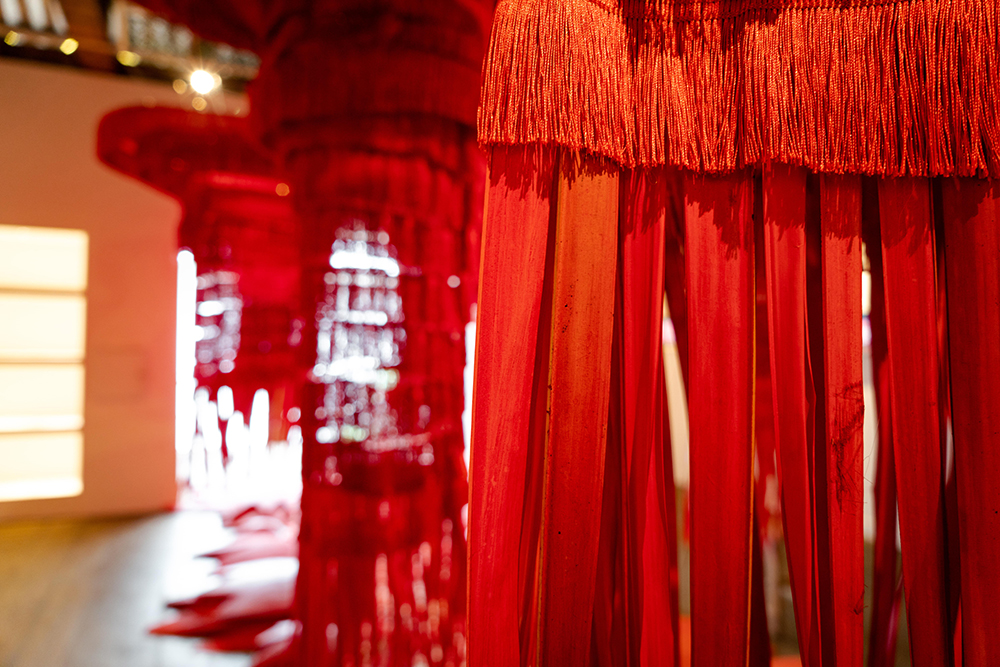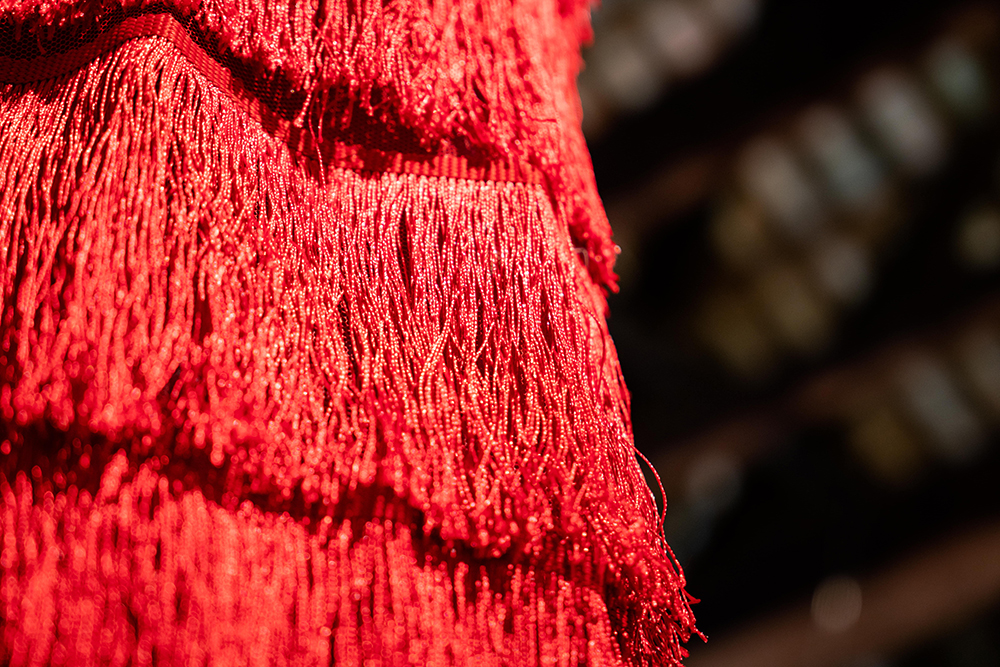Students constructed a pavilion made with metallic frames and scaffolding, covered with fabric surfaces and crafted model units. The pavilion itself is a geometric, material, and spatial manifestation of shared stereotypical ‘Chinatownising’ forces: an inhabitable red and gold folie or a purposely architectural cliché. Once inside, a trans-territorial ‘Chinatownised’ world is represented through edited videos on multiple screens. Moments, public rituals, and private objects from Yaowarat are displayed; then, with the contribution of a network of friends living in various international Chinese communities, students accurately and playfully paired them with similar but geographically displaced settings. This series of crafted mutual copies highlighted invisible cultural clashes and subtle aesthetic overlaps. Welcome to the realm of authentic replicas.

Sabrina Morreale
Lorenzo Perri
Sai Rojanapirom
Mook Attakanwong
Att 19 gallery
Notice: Undefined index: collaborators in /var/www/vhosts/www.inda.arch.chula.ac.th/httpdocs/experimental-projects/wp-content/themes/tailwindtheme/theme/single-project.php on line 111
Lalida Attawetkul
Santhila Chanoknamchai
Warut Im-erb
Tinn Kiewkarnkha
Sutinee Leelaratrungrueang
Thatsama Leeumnadwong
Waris Majitnapakul
Preeyanuch Natthapan
Koonanan Panyahom
Kasipang Phantajak
Chanakarn Pongteekayu
Sasipa Punkasem
Sirapat Sapthaweeteerakul
Pann Sermchaiwong
Varinda Suphantharida
Pichamon Taksinawong
Sasipat Tarinamornpong
Choomcherd Virapat
Related Projects:
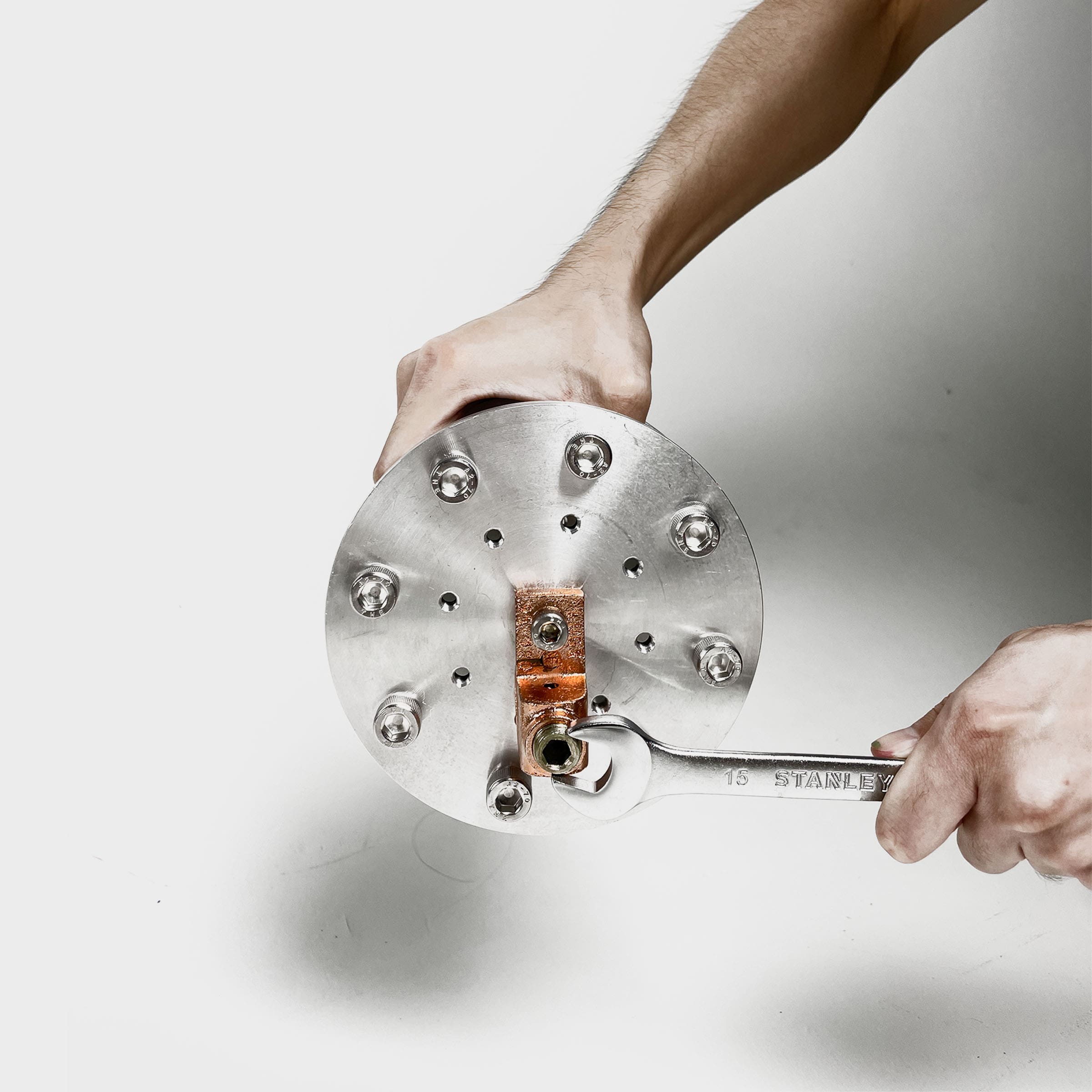
Deep Surface
The aim for this project is to interrogate the interrelationships between machine tools, machine instruction, material behavior, and geometry. More specifically, we will be developing robotic fabrication tools and techniques that target robotic toolpathing, contouring, and deep surfaces. Digital geometry is transferred into a designed toolpath that a robot arm or CNC machine follows in space. Each toolpath may consist of a series of planar ‘drawings’ that are successively ‘inscribed’ in a material (subtractive manufacturing) or successively deposited as material (additive manufacturing). Each stroke of the tool may leave a trace in the material locally; whether it is the depositing of clay, the carving indentation from a drill bit or the pressure of a brush. This means that we are as interested in the design of the toolpath as we are in the design of the overall form. The toolpath is where geometry interfaces with material. It is where geometry acquires character and articulation in the form of pattern and texture. It is where the precision of the digital realm may loosen as a result of a negotiation between geometry, machine, and material.
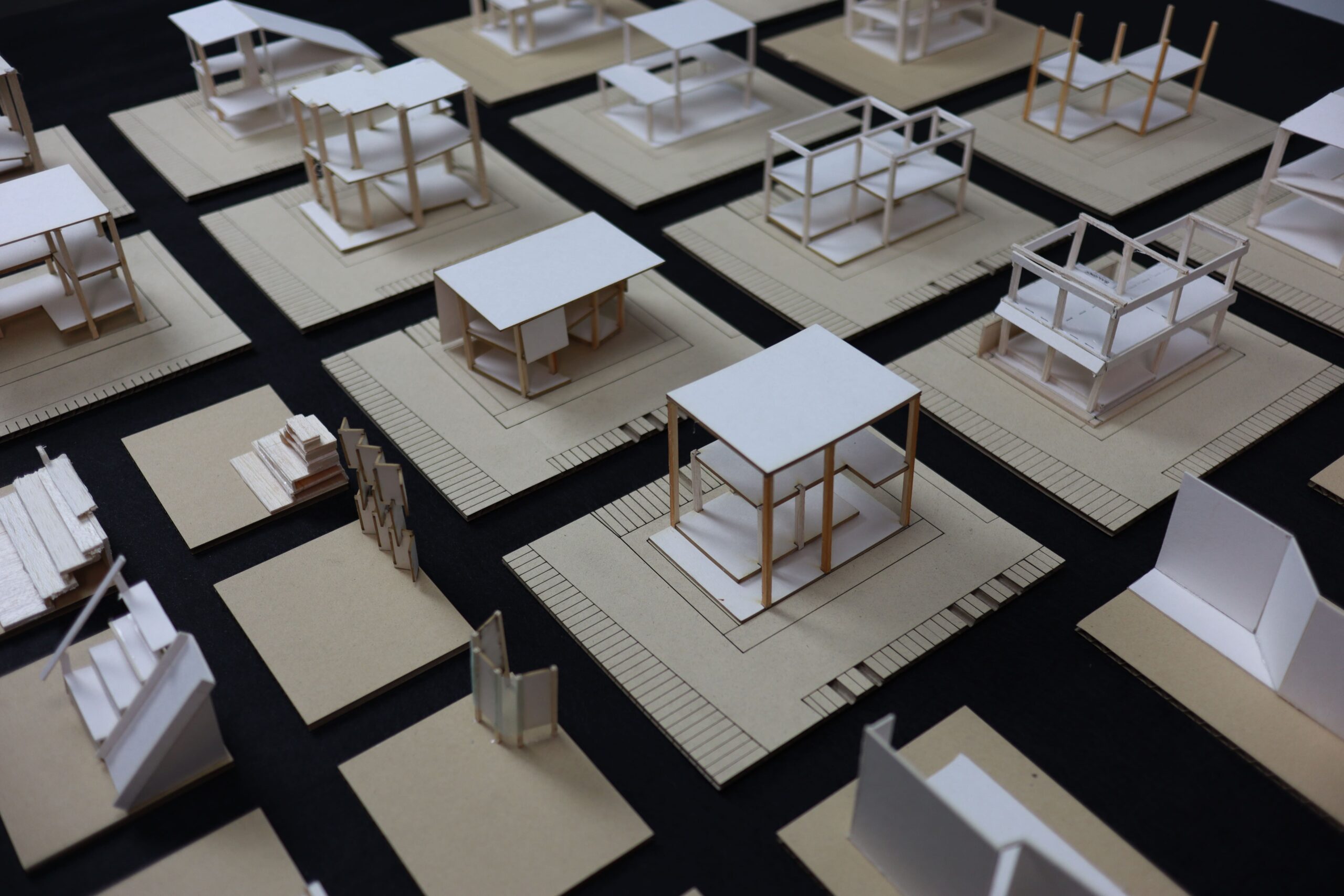
Praya Prasit Community Learning Center
The project engages with the Phraya Prasit Community of 700 people to redevelop their existing community building into a multifunctional community learning center. Students developed a well-crafted project that not only serves the community but also encourages students to engage with similar activities in their future professional life. Students were engaged with an existing building in Dusit District and learned how to work with the local community, how to survey an existing structure and use modern techniques to prepare a body of research work.
